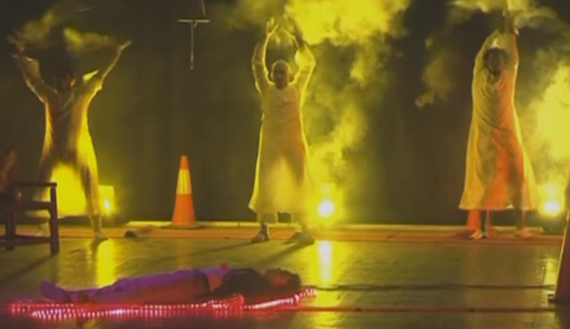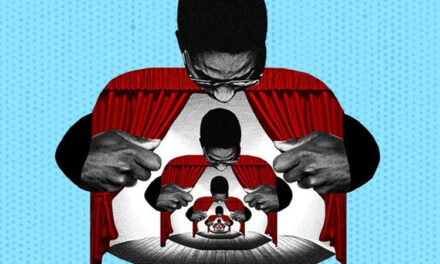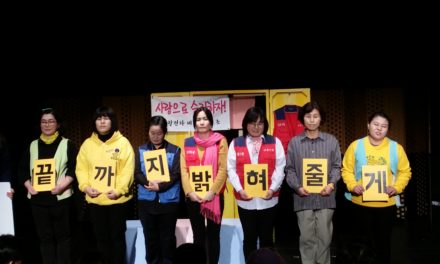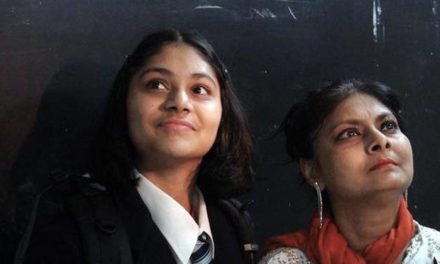Introduction [1]
Political violence (resistance violence, revolutionary violence, state violence, wars and terrorism) has been a compelling topic for many playwrights and researchers. As far back as the classical drama of ancient Athens, plays like Prometheus Bound, Oedipus Rex, Antigone, and the Bacchae have depicted violence that could be, in a sense, regarded as ‘political.’ During the Renaissance, terror was used as a “weapon of state power”, and this is reflected in some of the Elizabethan dramas where “Renaissance tragedy has its origins in Tudor terror and in the embryonic British state as much as in the Italian city-state of Machiavelli” (Orr & Klaic 3-4). However, it is chiefly in the twentieth century that playwrights like Sean O’Casey, Peter Weiss, Trevor Griffiths, Bertolt Brecht, and Edward Bond have explored the dialectics and problematic of violence and resistance, violence and revolution, and violence and terrorism, seriously and in-depth. Their plays address the ethical and political problems of the justifiability of violence in the theatre. Even more recently, with the escalation of terrorism as a global phenomenon, contemporary playwrights like David Hare, Victoria Brittain, Gillian Slovo and Robin Soans have begun to deal with such issues as the “War on Terror,” the investigation of terrorism suspects, and the personality of the terrorist.
In Political Violence in Drama, Mary Karen Dahl postulates that contemporary playwrights “variously recognize, manipulate, and focus the conventions,” which she sees as the “directed use of violence,” to “create diverse images of human power” (Dahl 10). Contemporary dramatists who explore the use of political violence are asking “whether directed violence can resolve the crisis [the polemical legitimacy of using violence] (or at least revive the health of the body politic)” (9). They investigate the problematic legitimacy of political violence, asking whether “directed violence or even a spontaneous sacrificial event could generate the belief systems and social institutions that might re-establish the distinction between legitimate and illegitimate violence” (9).
Since political violence is a recurrent noticeable phenomenon in the history of Iraq, the representation of political violence in the Iraqi drama has ideologically taken different shapes; it has been dramatized either directly or indirectly through various dramatic vehicles and trends, be they mythology, history, folklore, and so on. In the pre-invasion era, the oppressive Ba’athist regime tried to control and mobilize the Iraqi political drama for its ideological goals. However, a few playwrights managed to escape the censorship and sometimes jeopardize their lives to produce plays (whether by utilizing indirect strategies such as Western drama, far-reaching settings, and experimental modes of representation, or by employing a direct realistic approach to probe and expose the deepest tragedies lying in the protagonists’ lives and situations) that touch on the oppressive policy of the Ba’athist regime. Nonetheless, in the post-invasion era, the depiction of political violence revolves mainly around the American invasion and the destruction caused by the invasion. To portray the violence perpetrated by the Americans and their allies in Iraq, Iraqi playwrights use various dramatic techniques and modes of representation such as mythology, fantasy, realism, etc.
After the invasion in 2003, numerous playwrights and directors, like other artists and scientists, fled the country and started producing plays in Arab-speaking countries (such as Syria, Jordan, the United Arab Emirates, Morocco) and in European countries (such as Denmark, Sweden, and England). The issue of political violence was a prominent theme in most plays produced during this period. The majority of contemporary plays showed a sort of traumatic violence where the American invasion and its military presence were represented as the only reason or agent of the current political violence in Iraq. Torture, destruction, and displacement were depicted as committed mainly by Americans as in Aslak Sha’eka (Barbed Wires), Shahwa al-Nahayat (The Lust of the Ends), Ishtar fi Baghdad (Ishtar in Baghdad) etc. Other plays explore alternative agents of violence such as Abdul Razaq al-Rubai’s Umara al-Jahim (Hell’s Evangelists), Muhaned Hadi’s Hadher Tijwal (Curfew) and Fi Qalb al-Hadath (In the Heart of the Event), Kahil Khalid’s Wehdet al-Inaya al-Muraqeza (Intensive Care Unit), and Haithem Abdul Razq’a Dhilal (Shadows).
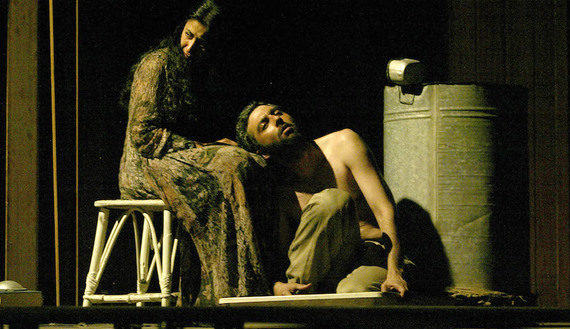
Iraqi actors perform on the stage of the damaged Al-Rashid Theater in Baghdad May 4, 2003, during the first post-war theatre play in the city. Photo by REUTERS/Damir Sagolj
While most of the English language plays about violence and terrorism in Iraq try to awaken the audience to the deception and ‘spin’ practised by their governments’ policies and therefore ignore other important violence-agents and violence-facets, a number of Iraqi plays either represent violence that has been overdone by the media and thus indulge the traumatized[2] audience in their self-pity, or encapsulate their argument about violence in fantastic, mythological, poetic setting and language. Hence, I think that neither the English language nor the Iraqi-Arabic playwrights may be judged to have succeeded comprehensively and objectively in incorporating the main factors that have caused political violence in Iraq.
Several Iraqi-Arabic and English language playwrights show violence against Iraqis as a result of the invasion/occupation only, especially in the Iraqi plays where the Americans are portrayed as the new (barbarian) Mongols. They either neglect or ignore other factors that cause political violence. In fact, many of them, except for Betrayed and Hell’s Evangelists, do not mention or reveal the violence that is caused by, for instance, religious militias, al-Qaeda, the new Iraqi government, and other Arab countries in the region. In the case of the Iraqi-Arabic playwrights, their limited view might be a result of either the playwrights’ religious, ideological, and artistic background, the influence of the media, or the playwrights’ fear of being targeted.
Regarding the English language playwrights, their narrow depiction of violence could stem from either the influence of the media and journalism as the key source for their drama, the collective (passionate) feeling of guilt as being subjects of the invading governments, the intention of addressing the Western audience only, or their lack of a complete understanding of the real situation in Iraq.
It is important to note that while playwrights of this period tackled the issue of political violence, the direct representation of revolutionary and/or resistance violence in Iraqi plays is rare. Why do Iraqi playwrights, in spite of the obvious public indignation and dissent against the American occupation and the new Iraqi government, refrain from advocating and/or utilizing revolutionary and resistance violence?[3] There are possible interpretations that may be assumed to answer this question. It could be that Iraqi playwrights may not believe in violence as a cure to the problem of the occupation. Many people in Iraq have not believed that violence could end the occupation. However, this does not deny the fact that nearly all Iraqis have been unhappy with the American presence. Second, Iraqi playwrights could be afraid of being politically prosecuted or tracked down by the government/the dominating militia groups. Fear of being arrested has historical roots in the Iraqi memory— many writers and artists were captured and tortured during Saddam’s reign. Third, they might be concerned about being labelled as violence agitators. Fourth, they might not believe in the direct depiction of revolutionary or resistance violence nor in the direct address/communication in drama.
Because the main source for English language playwrights who write about Iraq is the media and soldiers’ testimonies, verbatim might be the appropriate dramatic vehicle to show the conflict in Iraq. The problem here is that the media is not a completely reliable source of information, not even taking into account the ideological orientation. However, what verbatim drama tries to achieve, as Alecky Blythe claims for her plays, is to “provide insight where journalism fails” (Verbatim Verbatim 101); for Soans, it provides a venue for the people to speak for themselves, an “implication of otherwise lost voice” (ibid 32).
As for Iraqi playwrights, experiencing at first hand the traumatization of the populace, their main source is the knowledge of the situation which comes from their ongoing involvement in the daily struggle and violence. Some Iraqi playwrights draw on the media itself to write their plays, as in dealing with the Abu Ghraib scandal. Channels like al-Jazeera and al-Sharqiya, imbued with propaganda and nationalistic ideology, have played their own role in manipulating the attitude of many Iraqis and Arabs concerning the war.
In general, it can be said that while most American and English plays about Iraq try, first and foremost, to unveil the public ‘spin’ fabricated by the American and British governments concerning the Iraq war, Iraqi dramatists attempt to dig deep into the tragedy of the situation to reveal the injustice of the invasion and of the human suffering in Iraq. The violence shown in Iraqi plays, though sometimes too passionate and overdone, usually aims to provoke the audience emotionally, or as Qasim Matrood puts it: “the violence in the Iraqi drama tries to generate an impact on the emotional side of the audience which in turn creates a bridge for the audience’s later thinking” (Matrood).
English Language Plays about Iraq
Since 2003 a considerable number of plays have been written and/or produced in various parts of the world, basically in Iraq, the UK and US, as a response to the 2003 war and its consequences in Iraq. In the US and the UK, while some plays have been written by playwrights like David Hare and Gregory Burke, others have been written by what are called “embedded reporters” or adapted from classical and Shakespearean drama to evoke, even indirectly, the issue of the Iraq invasion. Though the dominating form of the plays, especially the British, are verbatim, documentary and tribunal, playwrights have tried a variety of forms, settings, and techniques to represent the issue of the Iraq invasion. The plays written about the Iraq invasion can be divided into five main categories:
- Plays that deal with the politics of the invasion. They are usually written, (except for Tim Robbins’ Embedded (2004), a satirical cartoonish depiction of the politicians and Iraq invasion), in verbatim, tribunal or documentary style such as David Hare’s Stuff Happens and Norton Taylor’s Justifying War. These plays “were designed as interventions into the political ethos of invasion” (Gupta 109).
- Plays which deal with the front-line/home experiences usually written by “embedded reporters,” such as The Pull of Negative Gravity (2004) and Live from the Front (2005), or by playwrights like Simon Stephens’ Motortown (2006) and Gregory Burke’s Black Watch (2007);
- Plays that were adapted from a different era (classical or Shakespearean)and made relevant to the issue of the Iraq invasion such as the production of Henry V directed by Nicholas Hytner in 2003, and Antigone directed by Lorraine Pintal in 2004. These plays are not the focus of the current research.
- Plays that portray violence targeting Iraqis: terrorist (sectarian) violence (e.g. George Packer’s Betrayed and Mike Bartlett’s Artefacts), and violence exerted by the Americans (e.g. Jonathan Holmes’ Fallujah, and Judith Thompson’s Palace of the End, which deals with the issue of Abu Ghraib torture)
- Plays that explore the issue of responsibility and relationship between the American and British soldiers/ personnel and the Iraqis (e.g. Teevan Colin’s How Many Miles to Basra? and Betrayed)
Most of these plays are written as a verbatim drama where the playwrights dramatize collected interviews and/or politicians’ and stakeholders’ public speeches using multimedia devices. These plays can be seen as “blips in that broader public theatre” which, hinging on the mediatized and the virtual, shows the social reality of the Iraq invasion and highlights “that perception of the public theatricality”; therefore, these plays could be considered as “part and parcel of the establishment strategy for managing public belief and disbelief that is conducted continuously in courtrooms and parliaments and press conferences and so on” ( Gupta 117).
- Arabic-Iraqi Plays
In studying the Iraqi plays, I have noticed the following:
- Some plays depict the Iraq invasion as similar to Hulagu’s barbaric invasion of Baghdad in 1258. The invasion of Hulagu becomes a motif throughout these plays such as Lust of the Ends, Barbed Wires, Ishtar in Baghdad, and even in 9 Parts of Desire which is written by Iraqi-American Heather Raffo. Portrayed as a new barbarism indoctrinated and carried out by forces in the West, the image of the ‘barbarian’ in the plays can be regarded as a counter-discourse to the American discourse of the ‘War on Terror’, where the invasion is presented as part of the war between ‘civilization and barbarism’. Hence, since each discourse attributes the image of barbarian to the enemy, the so-called ‘War on Terror’ could be perceived as a war between barbarians, or a clash of barbarians. Some of these playwrights, like Sabah al-Anbari and Rasha Fadhil, utilize a variety of techniques and settings (such as Brechtian techniques and amalgamation of realism and mythology).
- Like the motif of Hulagu, the torture in Abu Ghraib becomes a recurrent picture throughout many Iraqis plays, as in Ishtar in Baghdad, Lust of the Ends, and even in the production of Matrood’s It is just Trash in Mosul in 2007. Unlike the treatment of Abu Ghraib in the Canadian play Palace of the End, where the playwright highlights Lynndie’s victimization by the American military indoctrination, the Iraqi plays show a demonized picture of the Americans’ actions and the victimization/humiliation of the Iraqis at the hands of their torturers.
- A certain number of plays dramatize the issue of terrorism, either by merely depicting terrorist violence targeting civilians and the Iraqis’ sufferings because of that violence (e.g. Intensive Care Unit, Curfew) , or by exploring the discourse of terrorism and the personality of the suicide terrorist (e.g. Hell’s Evangelists). Yet, there is a contrary example, A Citizen, which, through an individual dilemma of a father who is forced to kill either himself or his child, investigates terrorism and its history in a far-fetched , absurdist setting.
- The use of clichéd realism, stereotypical and bromide discourse in dramatizing the destruction of the American invasion, as in Abbas abdul al-Ghani’s Aswar Sha’eqa (Barbed Wires) and Remote Control, and the impact of terrorism in Qasim Matrood’s Rimah al-Fajee’a (Shafts of Bereavement).
- Plays connect Saddam’s cruel regime with the violence of today such as Baghdadi Bath and 9 Parts of Desire (Iraqi-American)
- In spite of the public discontent, anger, and suspicion about the successive governments, which came after the fall of Saddam, I have not found plays that deal with revolutionary violence or even make any suggestion of revolution. Also, there is no trace of the issue of resistance in the Iraqi plays. Though the war on Iraq is considered an invasion/occupation and thus resistance becomes an essential issue, Iraqi playwrights remain silent regarding this issue. It seems that most of these playwrights are either afraid of being targeted as advocates of or they have no belief in the current armed resistance. Also, they might avoid the reference to the issue of resistance because, unlike the British verbatim playwrights, they do not believe in employing direct political discourse in drama.
- Most of the plays examined are Baghdad-centric. They focus on Baghdad while ignoring the problems and violence in the north and south of Iraq. Their depiction of Baghdad in relation to the so-called Abbasid ‘golden age’ and glory is inaccurate for the majority, the Shiites, WHO look at Baghdad differently; what is seen as a golden age in the eye of the Sunni scholars and people, is regarded an oppressive regime of usurpers who stole by force the rule from the Shiites’ Imams and oppressed the Shiites throughout history. Thus the plays must appeal more to audiences outside Iraq, simply because the majority of Muslims in the Arab world are Sunnis.
- While most English-language playwrights could be considered as, to use G. Patterson’s terminology, “interventionist” because they make use of the mediatized and the virtual to challenge the propagated view of the invasion, Iraqi playwrights can be perceived as “reflectionists,” because they are satisfied merely with depicting what is already known and shown via the media without offering new horizons or challenging an accepted opinion.
- While verbatim plays could sometimes engage the audience’s mind in thinking about the situation, most Iraqi plays involve the audience empathetically. In the survey I conducted, I have realized that the theatre professionals have failed to comprehend the fact that the effect of the contemporary plays is mainly cathartic
- Characters in most Iraqi plays are rigidly divided into good and evil with no dramatic complexity or depth in characterization and in the plot.
- Iraqi plays do not show any depiction of violence committed against black Iraqis, Christian Iraqis (except for Hell’s Evangelists where the playwright refers very briefly to violence targeting the so-called ‘crusaders’), homosexuals (who have suffered sadistic treatment at the hands of the religious militia in Iraq), former Ba’athists, women, and translators , or Iraqis working for the US and their allies.
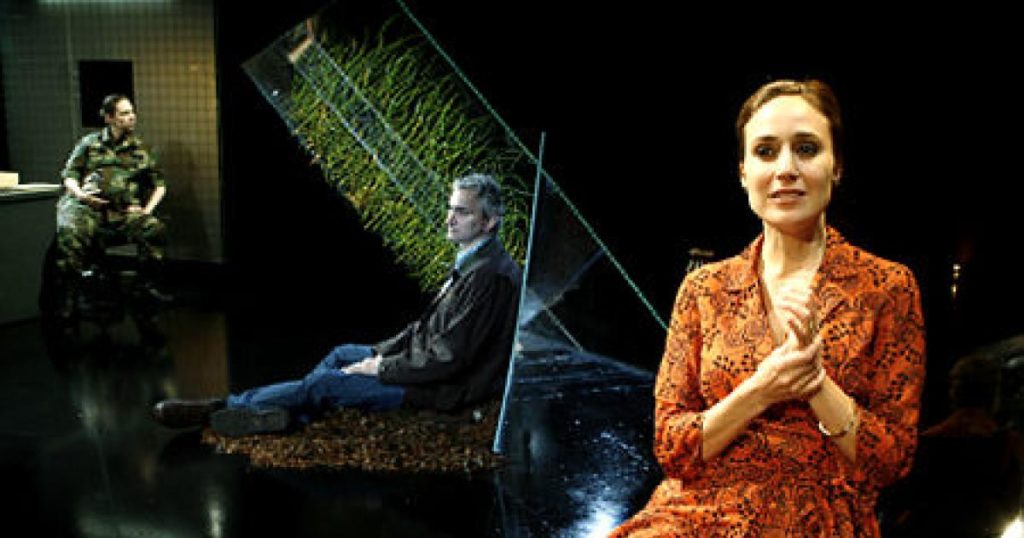
From left: Teri Lamm as Lynndie England, Rocco Sisto as David Kelly and Heather Raffo as an Iraqi woman in Judith Thompson’s Palace of the End commissioned, developed and produced by Epic Theatre Ensemble. Press photo
Works Cited
Dahl, M. Karen. Political Violence in Drama: Classical Models, Contemporary Variations. Ann Arbor: UMI Research Press, 1987.
Gupta, Suman. Imagining Iraq: Literature in English and the Iraq Invasion. London: Palgrave Macmillan, 2011.
Hammond, Will and Dan Steward, ed. Verbatim Verbatim: Contemporary Documentary Theatre. Oberon Books: London, 2008.
Matrood, Qasim. Personal Interview. Jul.30, 2010.
Orr, J. and D. Klaic, ed. Terrorism and Modern Drama. Edinburgh: Edinburgh UP, 1990.
[1] This article was adapted from Al-Azraki’s Clash of the Barbarians: The Representation of Political Violence in Contemporary English and Arabic Language Plays about Iraq (Doctoral Dissertation). York University, Toronto, ON, Canada, 2011.
[2] By traumatized audience, I mean those who were either affected by or had experienced the violence in Iraq.
[3] During Saddam’s reign, Iraqi dramatists and directors avoided direct and even indirect representations of revolutionary violence as they were very cautious of being impeached by authorities.
This post was written by the author in their personal capacity.The opinions expressed in this article are the author’s own and do not reflect the view of The Theatre Times, their staff or collaborators.
This post was written by Amir Al-Azraki.
The views expressed here belong to the author and do not necessarily reflect our views and opinions.

